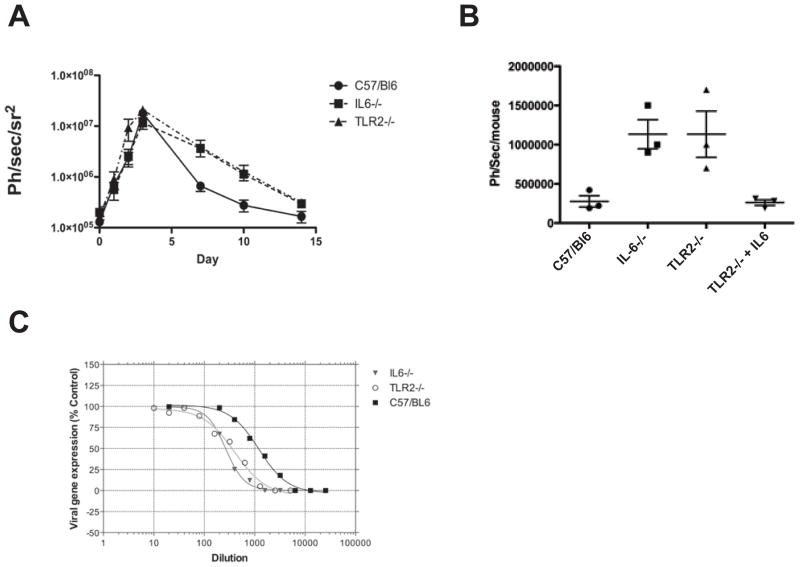Figure 3.
Robust long-term immune response to vaccinia is dependent on early TLR2 and IL-6 signaling.
(A) TLR2−/− or IL6−/− mice display delayed clearance of vaccinia virus. Mice (wild-type, TLR2−/−, or IL6−/− of the C57BL/6 background) were infected i.v. with 1 × 107 pfu of Western Reserve strain vaccinia expressing luciferase. Overall viral load was determined at different times by bioluminescence imaging (BLI) after luciferin substrate delivery by intraperitoneal injection in an IVIS200 (Xenogen). No differences were seen in initial overall viral gene expression (correlating with viral replication) or biodistribution (except that an early spleen signal seen in C57/BL6 mice was absent from the gene knock-out strains). Significant differences were not seen until 6 days after infection, when the gene knock-out strains displayed delayed viral clearance (data represented as mean ± SD, with n = at least 3 mice per group).
(B) Addition of exogenous IL-6 can substitute for loss of TLR2. C57BL/6, TLR2−/−, and IL6−/− mice were infected with vaccinia expressing luciferase as before; in one group, TLR2−/− mice were additionally treated with 500ng IL-6 delivered intraperitoneally. Viral luciferase gene expression is shown for whole animals as determined 7 days post infection (data represented as mean ± SD, with n = at least 3 mice per group)
(C) Loss of TLR2-IL6-pSTAT3 early signaling pathway leads to reduced levels of anti-vaccinia neutralizing antibody. Mice treated as above were sacrificed 21 days after initial viral infection, and levels of vaccinia specific antibody in the serum were determined with a viral neutralization assay. The TLR2−/− and IL6−/− strains both displayed reduced levels of neutralizing antibody.

